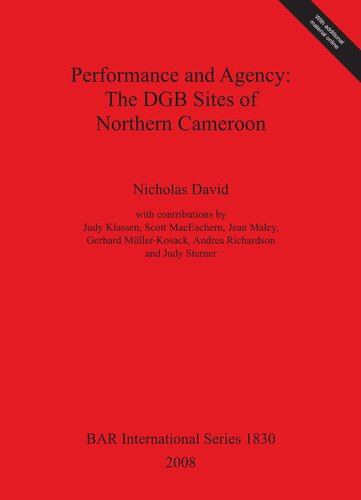

Most ebook files are in PDF format, so you can easily read them using various software such as Foxit Reader or directly on the Google Chrome browser.
Some ebook files are released by publishers in other formats such as .awz, .mobi, .epub, .fb2, etc. You may need to install specific software to read these formats on mobile/PC, such as Calibre.
Please read the tutorial at this link: https://ebookbell.com/faq
We offer FREE conversion to the popular formats you request; however, this may take some time. Therefore, right after payment, please email us, and we will try to provide the service as quickly as possible.
For some exceptional file formats or broken links (if any), please refrain from opening any disputes. Instead, email us first, and we will try to assist within a maximum of 6 hours.
EbookBell Team

4.3
88 reviewsThe dry stone structures that are the subject of this book are located in the Mandara mountains of the Extreme North province of Cameroon and are known to the Mafa who live among them as diy-ged-bay, best glossed as "ruins of chiefly residence". From this the term "DGB site" is derived, having the advantages of brevity and of lacking implications regarding function. Following the introduction, chapter 2 presents basic information on all known DGB sites and suggests a typology. Chapter 3 is an account of the excavation and dating of DGB-2 emphasizing its complex sequence of construction and reconstruction. Chapter 4 similarly presents the excavation of DGB-8. In chapter 5 there is an analysis of the artifacts and ecofacts from the excavated sites and thelight they throw upon the cultural sequences. Chapter 6 begins by extending the discussion of cultural sequence to the full set of sites. It then briefly evaluates and discards a number of the functional interpretations that were suggested prior to extensive fieldwork and excavation. Finally, by considering the archaeological evidence in the context of regional ethnology and the environmental record, a case is built for their having been centers of community ritual and performance related to water and reproduction. In chapter 7 Gerhard Müller-Kosack investigates concepts and traditions held by the Mafa regarding the population of the region and the builders of the sites. While these traditions throw little or no light on DGB culture, Judy Sterner shows that the DGB sites have had the more recent, turbulent, history of the region projected upon them. Finally, chapter 8 returns to the theoretical questions raised above and, after considering the energetics of DGB site construction, reassesses the sites in terms of the agential processes that brought them into being and the influence that they in turn exerted on their builders. A final section places the DGB culture in its broader archaeological and cultural context.